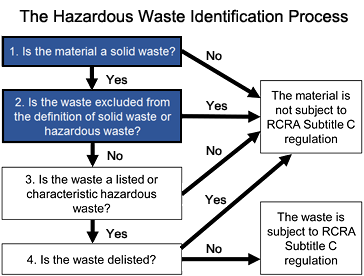Not known Facts About Reclaim Waste
Not known Facts About Reclaim Waste
Blog Article
The Main Principles Of Reclaim Waste
Table of ContentsAll about Reclaim WasteNot known Details About Reclaim Waste The 10-Second Trick For Reclaim WasteA Biased View of Reclaim WasteReclaim Waste Can Be Fun For Anyone
Discover the kinds, incidents, and forms of fluid waste. Residential sewage waste describes the waste and items from a household septic container. This sort of waste is produced by humans in homes, institutions, and various other buildings. This only includes septic systems that have a drainpipe field. The proper administration and disposal of residential sewer waste require liquid waste to be transferred to a sewer therapy plant where the correct approaches and tools are used to detoxify and throw away waste.
Commercial waste commonly includes possible threats, such as flammable materials or a combination of fluid and strong waste items, and calls for an advanced and in-depth disposal process. The disposal of commercial waste typically involves the purification of waste before transportation to ensure risk-free and appropriate disposal. Industrial waste is developed from by-products and runoff of industrial procedures and production.
This sort of waste can not utilize the same sewage monitoring transport or processes as septic or industrial liquids. The industrial waste monitoring procedure calls for the assessment and testing of fluid waste prior to it undergoes the disposal process (liquid waste disposal melbourne). Drainage waste is the liquid waste that comes from drainage and excess stormwater in highly inhabited areas or cities
Overflow waste can cause contamination and flooding otherwise managed appropriately. Find out more about drain cleaning and waste management. Making sure correct waste management can avoid catastrophes and decrease ecological harm. Both individuals in property setups and experts in industrial or manufacturing markets can benefit from comprehending the processes and guidelines of fluid waste monitoring.
The Ultimate Guide To Reclaim Waste
Get in touch with PROS Services today to discover our waste administration and disposal solutions and the proper means to look after the liquid waste you generate.
(https://www.edocr.com/v/pd6avrzq/leonaube33101/reclaim-waste)This supposed 'wastewater' is not just a vital resource but, after therapy, will certainly be released to our land, waterways or the ocean. Utilized water from commodes, showers, bathrooms, kitchen area sinks, laundries and industrial processes is known as wastewater.

water utilized to cool down machinery or tidy plant and devices). Stormwater, a kind of wastewater, is drainage that moves from farming and urban areas such as roofing systems, parks, gardens, roadways, paths and seamless gutters into stormwater drains pipes, after rainfall. Stormwater streams without treatment directly to neighborhood creeks or rivers, at some point getting to the ocean.
Reclaim Waste Fundamentals Explained
In Queensland, a lot of wastewater is treated at sewage treatment plants. Wastewater is transported from domestic or industrial sites through a system of drains and pump terminals, understood as sewage reticulation, to a sewer therapy plant.
The Department of Natural Resources suggests regional federal governments regarding managing, operating and preserving sewerage systems and therapy plants. In unsewered areas, city governments may need owners to install individual or house sewage treatment systems to treat domestic wastewater from commodes, cooking areas, shower rooms and laundries. The Department of Natural Resources authorizes the use of family systems when they are verified to be efficient.
In some brand-new neighborhoods, treatment of some stormwater to remove litter, sand and crushed rock has started utilizing gross pollutant traps. Wastewater treatment takes place in four stages: Eliminates strong issue.
Wastewater then streams into big tanks where solids resolve and are removed as sludge. Grease and scum are skimmed from the surface. Utilizes small living organisms understands as micro-organisms to damage down and get rid of staying liquified wastes and fine fragments. Micro-organisms and wastes are integrated in the sludge. Eliminates nitrogen and phosphorus nutrients that might cause algal blooms in our waterways and intimidate marine life.
Getting The Reclaim Waste To Work
Nutrient removal is not offered click here to find out more at all sewer therapy plants because it calls for pricey specialized tools. Clear fluid effluent created after therapy may still contain disease-causing micro-organisms - liquid waste disposal melbourne.

This usually suggests wastewater needs to be dealt with or impurities gotten rid of prior to it can be released to rivers. Most wastewater moves into the sewerage system. Under the Act, local governments provide authorizations and permits for eco appropriate activities (Periods) entailing wastewater launches that could have a regional effect. The division administers authorizations and permits to Ages involving wastewater launches that may have a local or statewide effect.
Reclaim Waste Fundamentals Explained
Otherwise, examples are taken for laboratory evaluation. Often many examinations are needed to develop the levels of each of the different contaminants such as oils, hefty steels and pesticides in water. Tracking supplies factual information about water top quality and can verify that permit conditions are being met. The information acquired through surveillance provides the basis for making water top quality choices.
Report this page